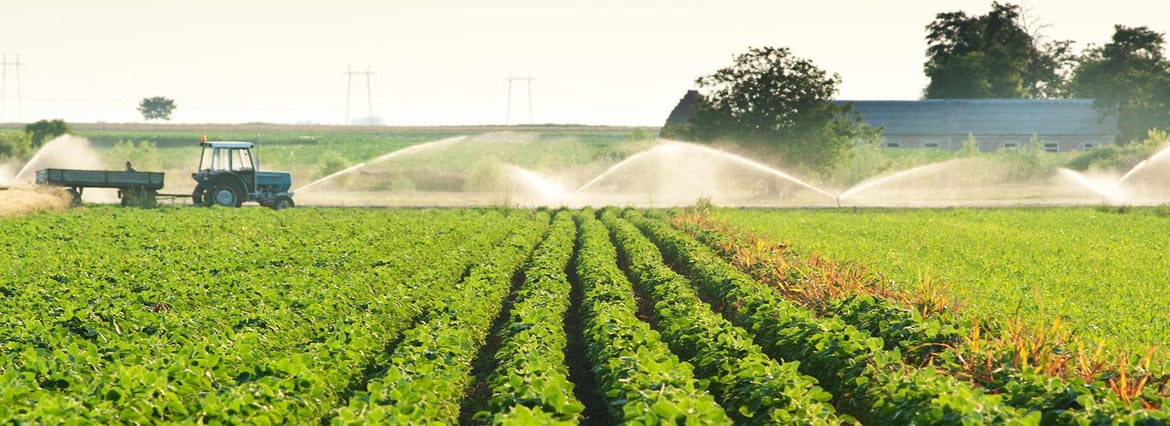
by Wesley Chun, Ph.D.
Grower's Secret, Chief Science Officer Emeritus
Amino acid fertilizers are manufactured either by hydrolysis or enzymatic treatment of animal or plant protein feedstock. Amino acid fertilizers are readily absorbed, transported, and utilized as a source of nitrogen and carbon for plants. This saves the energy expended by the plant to reduce organic matter, synthetic nitrates and ammonia into amino acids. Some amino acids are efficient metal ion chelators which can help with metal ion nutrient uptake and help protect plants from toxic levels of metal ions.
Amino acids also function as biostimulants for plants. As a biostimulant, amino acids can play important roles in enhancing plant productivity, especially under abiotic and biotic stress conditions. These functions combined with the ability to be approved for organic use, makes sustainably produced amino acids a smart choice for growers.
Let’s look a bit deeper into biostimulants. Biostimulants are defined as any substance or microorganism with the aim to enhance nutrition efficiency, abiotic stress tolerance, and/or crop quality traits (du Jardin, P. 2015. Scientia Hortic. 196:3-14.). There are a number of synonyms for biostimulants that date back to the 1950’s (see Yakhin et al. 2016. Front. Plant Sci. 7:249).
Today there are many products that are described as biostimulants for plants. They are manufactured from bacteria, fungi, algae, higher plants, animal raw materials, and humate containing materials (Yakhinet al. 2016). du Jardin (2015) lists seven main categories of biostimulants.
Although primarily serving as nutrients for the plant, specific amino acids can play additional roles as a biostimulant. For example, L-Proline can reduce the effect and speed up recovery time from abiotic stress by strengthening the cell wall. L-Glycine and L-Glutamic Acid are key components for chlorophyll production. L-Glycine and L-Glutamic can chelate metal ion nutrients and facilitate plant uptake and movement into cells. L-Tryptophan is a precursor in auxin synthesis which is used for root growth and development. L-Methionine is a precursor to ethylene which stimulates ripening. L-Arginine is a precursor to cytokinin production involved in cell growth, axillary bud growth and leaf senescence. Pollination and fruit formation require high levels of various amino acids. L-Histidine helps with ripening; L-Proline increases pollen fertility; L-Lysine, L-Methionine and L-Glutamic Acid increase germination; L-Alanine, L-Valine, and L-Leucine improve fruit/grain quality. For more information, refer to the references in the following table.
Plant processes and the amino acids involved.
|
Function |
Amino acids |
References |
|
Anti-Stress |
Hydroxyproline, Proline |
|
|
Chelating agent |
Cysteine, Glutamine, Glycine, Histidine, Lysine |
Souri. 2016. Open Agriculture 1:118-122.
|
|
Cold weather resistance |
Alanine, Arginine |
Levitt. 2012. Science. Chilling, Freezing, and High Temperature Stresses. |
|
Plant development, pollen fertility |
Hydroxyproline, Proline |
|
|
Growth stimulation |
Glutamine, Glycine |
Noroozlo et al. 2019. Open Agric. 4:164-172 |
|
Auxin precursor |
Serine, Tryptophan, Valine |
|
|
Chlorophyll precursor |
Glutamic acid |
Gomez-Silva et al. 1985. Planta 165(1):12-22 |
|
Cell division |
Arginine |
|
|
Woody tissue and lignin formation |
Phenylalanine |
Bonner and Jensen. 1998. ACS Symposium. Chpt 2. |
|
Ethylene synthesis |
Methionine |
|
|
Germination |
Asparagine, Arginine |
|
|
Hormone precursor |
Methionine, Tryptophan |
http://6e.plantphys.net/app03.html |
|
Viral resistance |
Alanine |
Amino acid products are marketed as fertilizers, nutrients, plant bio-activators, biostimulants, plant growth enhancers, etc. Unfortunately, since the biostimulant industry is still somewhat unclear in differentiating this group of agricultural materials since delineation of a clear mode of action for biostimulants is difficult for multifunctional and complex composition products. Yakhin et al. (2016) suggests “that there is a need for the nascent biostimulant industry to explicitly discourage the inclusion of nutrient elements and known biologically active molecules under the guise of a “biostimulant””.
Amino acid fertilizers’ main function is to supply nitrogen to the crop. However, the grower should be familiar with the additional functional properties of amino acids to aid in product selection and application. It is possible that different amino acid fertilizers manufactured from different source materials may have different concentration ratios of amino acids that could possibly confer additional benefits to plant growth as a biostimulant. The grower should also be aware that there are amino acid-based products that have additives such as micronutrients, saponins, trace elements, and plant growth hormones. The table above should help in determining the right fertilizer to use based on amino acid content. Read the product labels carefully for composition and make sure that it is organically approved if you are an organic grower. Contact your extension agent or representative for help.